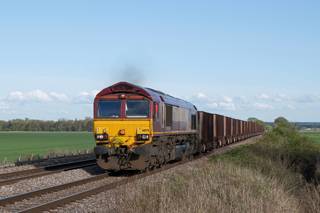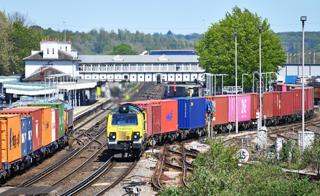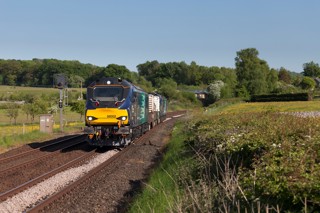Calls have been made to re-open an alternative rail route through Devon that could act as a diversionary line if the main Sea Wall line is blocked.
Currently 109 miles of railway are cut off from the national network because of the damage at Dawlish, with trains from Torbay, Plymouth and Cornwall unable to reach the rest of the UK.
Professor Frank Chambers, chairman of passenger watchdog TravelWatch SouthWest, said on February 10: “The Business Case is already made. The loss of income and earnings in south and west Devon and Cornwall over the next few weeks and months, while the Dawlish route is restored, already exceeds the cost of building a diversionary route.”
Chambers highlighted fears in the West Country that the line via Dawlish could be closed if a new line over Dartmoor was constructed. He told RAIL that the route must be in addition to the Sea Wall line, not a replacement.
The proposed re-opening would use the former Southern Region line that linked Okehampton, Tavistock and Bere Alston. That section closed on May 5 1968, with daily passenger trains running from Exeter to Okehampton for a further three years. Since then the track between Meldon Quarry and Bere Alston has been lifted, and some building has taken place on the line, although the trackbed remains largely intact. Meldon Viaduct is a Scheduled Ancient Monument (meaning it is of national importance).
Plans are underway to reinstate trains between Bere Alston and Tavistock. This is being developed by Kilbride Rail, whose Managing Director Peter Frost said: “If successful, the reinstatement of the remaining Tavistock to Okehampton section would complete the restoration of the original main line route, thereby providing at least a diversionary route to the Dawlish line.”
Andrew Roden, former RAIL news and features writer and leader of the successful Save our Sleeper Campaign, said a new inland route was needed to keep West Devon and Cornwall connected to the wider network during disruption at Dawlish.
Roden said it would “bring the economic, social and environmental benefits of rail travel to large areas of Devon and Cornwall currently bereft of sustainable transport links”.
He added: “This is not a misty-eyed romantic campaign developed by rail enthusiasts. We firmly believe that re-opening Okehampton-Bere Alston is of fundamental importance to the economic, social and environmental success of the South West and the wider rail network.
“The re-opening is feasible financially and in engineering terms. It will provide an inland route for trains from Cornwall and West Devon to Exeter and beyond when the current route through Dawlish is closed. It will provide a vital local rail service for communities along the route, and open up new journey opportunities for long-distance services.”
He continued: “The current situation at Dawlish will be resolved. It will be repaired a second time - but there will come a point, whether in two years, five years, ten years or 50 years, when the spending dries up. Acting decisively now means that when that time comes, Devon and Cornwall will remain connected by rail.”
Network Rail Managing Director of Network Operations Robin Gisby told RAIL: “Patrick McLoughlin has promised we will look at options, including the existing line. That is weeks and months away. The route across the hills is slower and will cost a lot.” He did not rule out the route being re-opened.
First Great Western Managing Director Mark Hopwood told RAIL: “There is always a risk that what has happened at Dawlish could happen again. We cannot tout solutions that are not viable. Okehampton may be a useful ‘Plan B’. There is good progress with the Tavistock plan.
“There are enormous concerns about diversions . It would be years yet. In terms of where we are, the priority is to rebuild the wall. Network Rail and the Environment Agency will look to better withstand the type of disruption it couldn’t handle last week.
“The other option is to build a shorter diversion, but that involves demolition of houses and an expensive tunnel.”
Richard Burningham, Manager, Devon & Cornwall Rail Partnership, told RAIL: “It strikes me that the Okehampton route could be re-opened quite quickly and at not huge expense if the will was there. But, while restoring the railway to Okehampton and Tavistock, it would only act as a diversionary route when the Sea Wall route was unusable.
“There is some fear in South Devon that it would replace the existing railway, and this would not be the case at all. Re-opening the Okehampton route would ensure that Plymouth and Cornwall, barring some very freak weather, would always be connected by rail to the rest of the country.
“As well as considering possible alternative rail routes, there also needs to be a look at what might be possible in the sea, to protect the coastline itself.”
Bruce Thompson, Devon County Council transport co-ordination service manager, told RAIL: “Breakwater/wave breakers may well be a much cheaper option than a new route - and protect Teignmouth and Dawlish from seawater flooding. The problem is not the height of sea level at the highest tide, but the wave height only during onshore gales/storms.”
- This news article was published in RAIL 742 on 19 February 2014















Login to comment
Comments
No comments have been made yet.